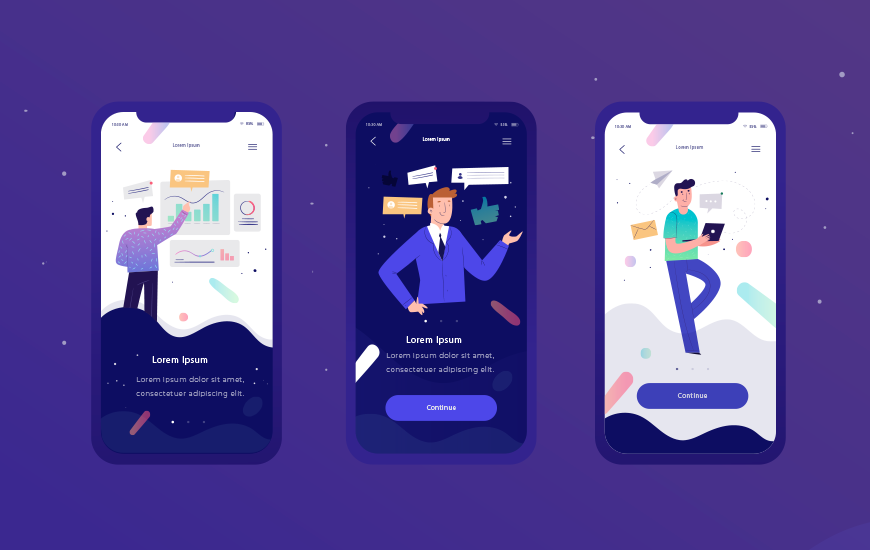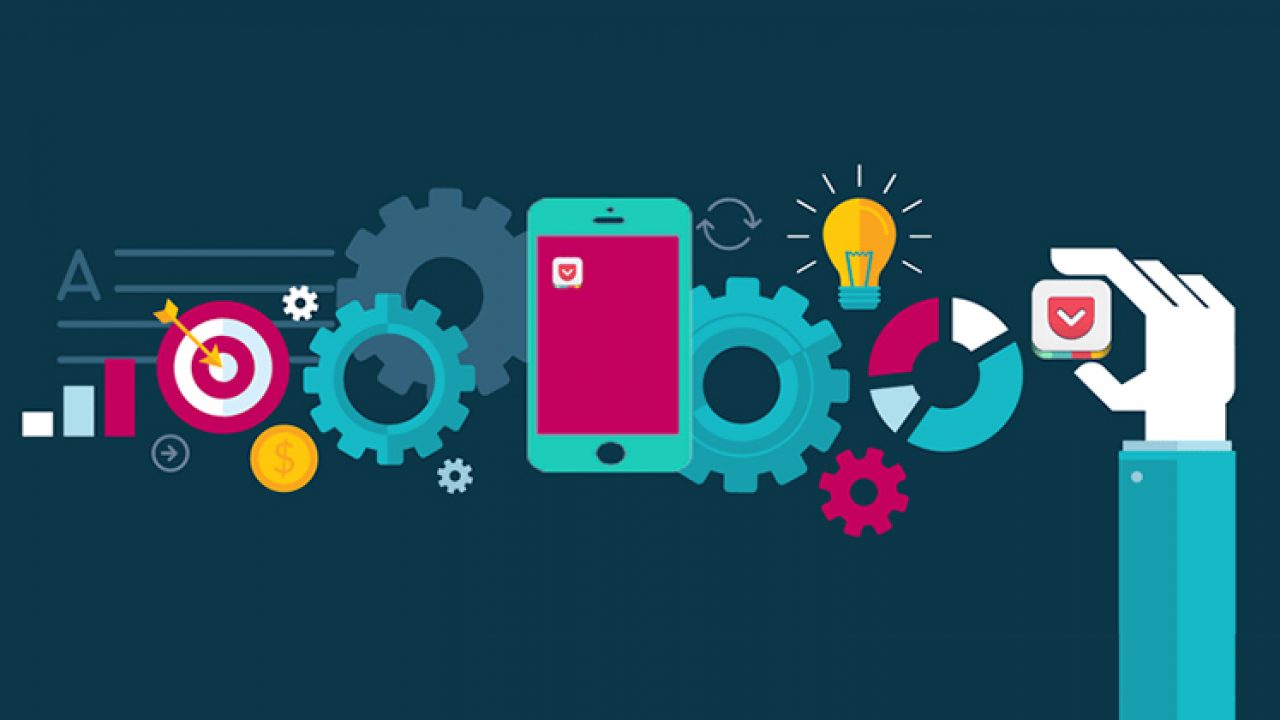Introduction
In the contemporary scenario, digital experiences, especially mobile, are wholly entrenched in daily functions; With people being themselves oblivious of the difference between the digital world and actual world. Usability is integral to mobile app development and helps in enabling smooth user experiences. Navigation is not to be ignored in a mobile app as it can seriously dent the product’s user experience (UX). This article strives to offer an overview of mobile app usability and seven ideal practices to deal with general usability issues.
What do you mean by Mobile App Usability?
Usability is explained as the ability to evaluate the ease of use of a system. Usability leads to the efficacy, capability, and contentment which enables users to accomplish certain goals. Mobile app usability is a part of UX that builds the whole tie between a user and the product. Mobile app usability enables learnability. A successful app must be intuitive, and the user should be able to handle the same without much difficulty. In case a user experiences an issue, resolving the same should not consume too much of time. Mobile app onboarding helps guide users through a mobile app, improves usability, and recover from errors.
Principles Guiding Mobile App Usability
Several factors help in a mobile app’s usability that will have a bearing on the operational efficiency and help a user accomplish goals. A usable interface should ideally have three main results:
Mobile app usability helps the user to be at home with the user interface (UI)
Users should achieve anything with minimum fuss using the app
Apps have zero scope for error. In case of any malfunctions,everything regarding the same becomes immaterial.
10 usability heuristics regarding user interface design
Our team gave ten usability heuristics guiding user interface design,
1. The System Status has to be very clear
System components and forms should be highly visible to make user aware of the context. The system has to inform the users about what is happening via proper feedback.
2. Keep It Simple
The system should converse in the language that could be easily understood by users. No usage of any incomprehensible technical jargon. Keep it simple and make information appear in a natural and proper order.
3. Users can err but you can’t
Users at times resort to actions in an app that they never desired to. In case of a mistake on the part of the user, ensure an imminent “emergency exit” without any kind of explanation. Mobile apps must possess undo and redo functions.
4. Maintain Certain Consistency
Consistency happens to be a bedrock of an ideal UX design as it brings down confusion. Uniqueness has to be maintained in an app to make it distinct from other apps. However, regular components in an app should not be diluted, to make your mobile app’s appearance consistent. This comprises visual, functional and external consistencies. Typefaces, fonts, buttons, and labels have to be uniform. With consistency, users can use existing awareness while using your mobile app.
5. Keep Errors At Bay
It is better to avoid mistakes or glitches from cropping up. Do away with error-prone situations or examine them and provide users with a confirmation option prior to carrying out an action.
6. Recognition Not Recall
Make user’s to think less by having objects, actions, and options clear. The user should not be forced to memorize information from one part of the application to another. Instructions have to be easy, clear and very much accessible at all times.
7. Flexibility And Efficiency Of Use
The system should be equally accommodative to both fresh and experienced users. Also, Permit users to personalize regular actions.
8. No Unwanted Info
No irrelevant or rarely sought info please. Such unnecessary inclusion can dilute the impact of relevant information. Clutter is curse as far as design is concerned. Each extra button, image, and icon turns the screen ugly and the product’s user flow very complex. It’s a must to do away with anything that isn’t needed for the mobile app design. Always go for a simple and intuitive design.
9. Tackle Error Deftly
Error tackling leaves a lot of impact on UX. Inadequate error handling together with incomprehensible error messages lead to frustration and turns users away from an app. Always keep in mind that users are not tech-friendly to find out errors. So, tell users what’s wrong in simple language. Every error message has to show:
What caused error and why
What an user should do to fix the problem
10. Help And Documentation
It is a good idea to communicate with a system without documentation, at times it becomes necessary to offer documentation. Any such info has to be easily accessible, fixated on particular tasks and not be too large.
7 Ideal Practices Regarding Mobile App Usability
Factoring in Nielsen’s heuristic principles, the following happens to be seven best practices to deal with regular mobile app usability problems.
1. Attain Cross-platform Compatibility
A usual grouse with mobile users is an app that does not work for their model of smartphone. Android and iOS, for example, are two diametrically opposite platforms.
It is not possible to clone an iOS app for Android and vice versa. Every operating system follows totally different programming, design, and interface aspects. For example, navigation varies on each platform dramatically. So, you have to create an app to have a native feel so that users can communicate properly.
2. Provide Value Straight Away
In case you wish to retain new users for your app, you have to ensure that they spot the value in the beginning itself, ideally during the onboarding process. If you can’t make users remain with you initially, then you will lose them forever. Hence, it’s important to ensure that you provide imminent value. Good user on boarding brings down the rate pertaining to abandonment apart from accelerating long-term success metrics like user retention and lifetime.
3. Smooth Navigation
Poor navigation is a sin, so just avoid that in mobile apps. The user should face no problem while trying to find what they want, the navigation should be as smooth as possible. While concentrating on usability, ensure that your products or services are easy to find. Keep in mind complications can lead to abandoning your app.
4. Clear & Concise Content
It goes without saying that content has to be simple while designing apps for mobile. Also, the content has to be relevant to the users as it should help users achieve certain objectives or find something they want. Consumers require full information for purchase, and not having basic information can lead to a poor conversion rate.The content has to be in sync with mobile app style,it can’t be a simple cut, copy version from the web. Avoid cramming excessive content inside the app as it can annoy users to a large extent and force them to stay away from the app. So, follow the rule that minimal is sufficient and maximum can be chaotic.
5. Bring Down The Amount Of Steps
Steps involved in finishing an action have to be lesser and make sure that they don’t frustrate users. It is always better to cut down on the process and keep finding ways to ease the same further. Even an extra button, image, and icon can turn the screen and the product’s user flow is very complex. It’s in your best interest to have a few important content and interface components. Therefore adopt a simple and instinctive design. As for e-commerce or retail apps, checking out can be a bit tedious. You need to key in your residential address, email address, and give an affirmation that you chose the apt product all along using a small screen. This process can be simplified further by making an account through a Facebook login. Devising your app with a convenient checkout option will even prompt users to buy more in less time.
6. Decrease The Scope of Scrolling
Prioritizing Content helps greatly to the usability of an app. Users should access most of the information within their screen size. Scroll down option should be avoided as much as possible and used only in rare cases, however, side-scrolling can be done away with. If someone wants to scroll sideways, it usually makes valuable content invisible.
7. Give Due Importance To Landscape Orientation
While building a mobile app, most of the people don’t give importance to landscape orientation. A good mobile app should be accommodative towards both portrait and landscape to cater to all the demand, especially for an app having video content.
Avoid Testing At Your Own Peril
The vital thing to do to test usability is to utilize mobile A/B testing platforms. A/B testing permits you to collate two or more variations of a certain app design or layout. For instance, you can examine the potency of buttons and how they vary in boosting conversions. Which design layout converts more users? Rather than surmising what users want or desire in your mobile app, test to clarify these conjectures. Therefore to enhance mobile app usability, you cannot ignore testing.
Finally
The success of mobile apps depend on simply one major thing: way users view the product. The usability helps a user evaluate your app on the basis of the ease of use, utility, and efficiency and overall experience factors. Usability can turn a new user into a loyal one, long-term customer, and eventually swell your bottom line.




